Long Term Monitoring of Health Inequalities: Headline Indicators – October 2015
Annual update of the 'Long-term Monitoring of Health Inequalities' headline indicators.
This document is part of a collection
Headline indicators of Health Inequalities
Healthy Life Expectancy (HLE)
In 2013-2014, male HLE at birth in the 10% most deprived areas in Scotland was 47.6 years, 25.1 years lower than in the least deprived areas (72.7 years).
Female HLE at birth was 51.0 years in the most deprived areas, 22.1 years lower than in the least deprived areas (73.2 years).
There have been no statistically significant changes to the gap in healthy life expectancy between the most and least deprived areas for men or women since 2009-2010.
Trends in HLE
In 2013-2014, HLE in Scotland was 60.6 years for males and 62.2 years for females. The increase in healthy life expectancy among men since 2011-2012, from 59.8 to 60.6 years, was not statistically significant. There has been less fluctuation in female HLE.
Between 1999-2000 and 2007-2008, HLE increased by 3.0 years for males and by 2.3 years for females. In 2009, the format of the self-assessed health question, on which healthy life expectancy data is based, was changed to align with the European Union, leading to a major discontinuity in the series. The markedly lower estimates of HLE at birth from 2009 onwards are not comparable with estimates for earlier years.
Inequalities in HLE, 2013-2014
HLE is significantly lower in the most deprived areas than in the least deprived areas, and increases linearly with decreasing area deprivation.
In 2013-2014, male HLE at birth in the 10% most deprived areas in Scotland was 47.6 years, 25.1 years lower than in the least deprived areas (72.7 years). For females, HLE at birth was 51.0 years in the most deprived areas, 22.1 years lower than in the least deprived areas (73.2 years).
Figure 1.1 Healthy Life Expectancy - Males - by Income-Employment Index Scotland 2013-2014
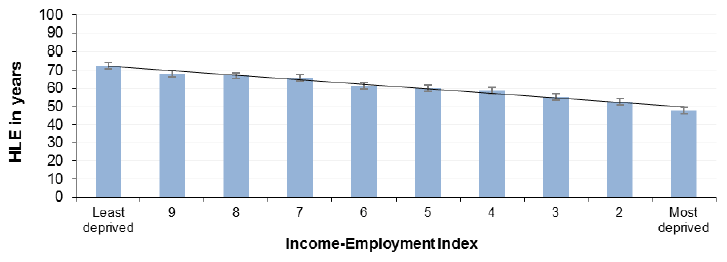
Figure 1.2 Healthy Life Expectancy - Females - by Income-Employment Index Scotland 2013-2014
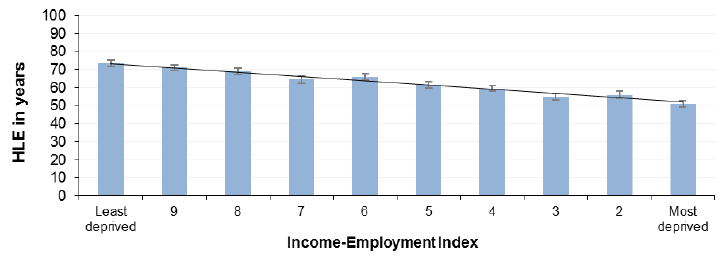
Trends in relative inequalities
The realtive index of inequalities (RII) has shown little change in the period since 2009-2010, ranging from 0.38-0.43 for men and from 0.36-0.40 for women over the period.
Although RII is lower in earlier years, the change in methodology used to calculate HLE means these figures are not comparable. Between 1999-2000 and 2007-2008, RII fluctuated in the range 0.29-0.33 for men and 0.25-0.28 for women and with no clear trend.
Figure 1.3 Relative Index of Inequality (RII): Healthy Life Expectancy - Males Scotland 1999-2000 to 2013-2014
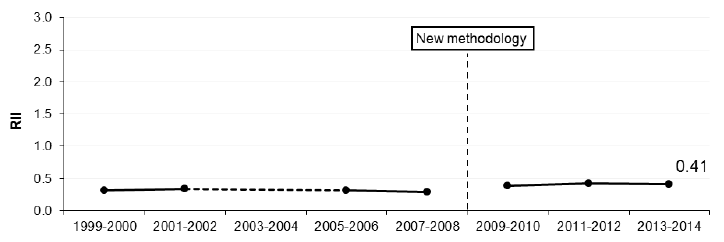
Figure 1.4 Relative Index of Inequality (RII): Healthy Life Expectancy - Females Scotland 1999-2000 to 2013-2014

Trends in absolute inequalities
The absolute range in HLE has increased among men from 22.5 years in 2009-2010 to 25.1 years in 2013-2014. This increase was not statistically significant, so data for future years in the time series will be required to determine if this is the beginning of a longer-term widening of the gap.
This follows a non-significant increase in HLE in the most deprived areas from 47.4 to 47.6 years but a significant increase from 69.9 to 72.7 years in the least deprived areas.
Among women, although there have been some fluctuations in HLE across the deprivation spectrum, recent changes have been similar in the most and least deprived areas.
Figure 1.5 Absolute Gap: Healthy Life Expectancy - Males Scotland 1999-2000 to 2013-2014
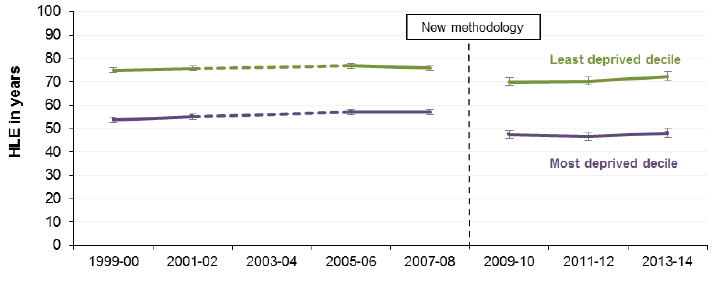
Figure 1.6 Absolute Gap: Healthy Life Expectancy - Females Scotland 1999-2000 to 2013-2014
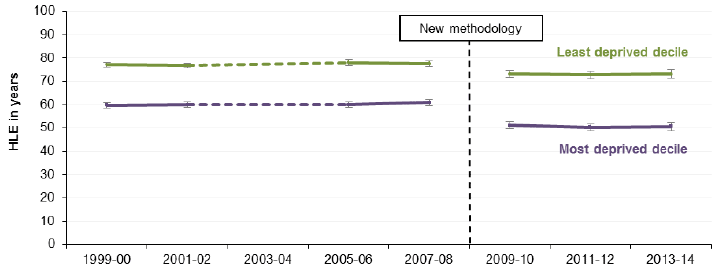
Healthy Life Expectancy and Life Expectancy, 2009-2010 to 2013-2014
The difference between HLE and life expectancy (LE) indicates the expected number of years spent in ‘not good’ health. In 2013-2014, men spend an average of 16.6 years in ‘not good’ health, compared to 19.0 years for women.
Men and women in the most deprived areas in Scotland spend more years in ‘not good’ health than those in the least deprived areas. In the most deprived areas, men spend on average 22.6 years in ‘not good’ health, compared to 9.8 years in the least deprived areas. The increase in HLE in the least deprived areas among men since 2011-2012 has outpaced the increase in LE, leading to a reduction in the number of years spent in ‘not good’ health.
Females in the most deprived areas spend 25.7 years in ‘not good’ health, compared with 11.3 years in the least deprived areas.
Table 1.1: Trends in male healthy life expectancy and life expectancy
| Male HLE in years | 95%LL | 95%UL | Male LE in years | 95%LL | 95%UL | Estimated years spent in 'not good' health |
|
|---|---|---|---|---|---|---|---|
| 2009-2010 | |||||||
| Scotland | 59.9 | 59.4 | 60.4 | 76.1 | 76.0 | 76.2 | 16.2 |
| Most deprived decile | 47.4 | 45.8 | 49.0 | 68.7 | 68.3 | 69.1 | 21.3 |
| Least deprived decile | 69.9 | 68.2 | 71.6 | 82.0 | 81.6 | 82.3 | 12.1 |
| 2011-2012 | |||||||
| Scotland | 59.8 | 59.3 | 60.4 | 76.6 | 76.4 | 76.7 | 16.7 |
| Most deprived decile | 46.4 | 44.7 | 48.2 | 69.2 | 68.8 | 69.6 | 22.7 |
| Least deprived decile | 70.2 | 68.5 | 71.9 | 82.1 | 81.8 | 82.4 | 11.9 |
| 2013-2014 | |||||||
| Scotland | 60.6 | 60.0 | 61.2 | 77.2 | 77.0 | 77.3 | 16.6 |
| Most deprived decile | 47.6 | 45.8 | 49.4 | 70.2 | 69.8 | 70.6 | 22.6 |
| Least deprived decile | 72.7 | 71.0 | 74.5 | 82.5 | 82.2 | 82.9 | 9.8 |
Table 1.2: Trends in female healthy life expectancy and life expectancy
| Female HLE in years | 95%LL | 95%UL | Female LE in years | 95%LL | 95%UL | Estimated years spent in 'not good' health |
|
|---|---|---|---|---|---|---|---|
| 2009-2010 | |||||||
| Scotland | 62.1 | 61.6 | 62.6 | 80.6 | 80.5 | 80.8 | 18.6 |
| Most deprived decile | 51.1 | 49.6 | 52.6 | 76.1 | 75.7 | 76.5 | 24.9 |
| Least deprived decile | 73.2 | 71.7 | 74.7 | 84.8 | 84.5 | 85.1 | 11.6 |
| 2011-2012 | |||||||
| Scotland | 62.3 | 61.8 | 62.9 | 80.9 | 80.8 | 81.0 | 18.5 |
| Most deprived decile | 50.2 | 48.6 | 51.8 | 76.4 | 76.0 | 76.7 | 26.1 |
| Least deprived decile | 72.8 | 71.2 | 74.5 | 84.8 | 84.5 | 85.2 | 12.0 |
| 2013-2014 | |||||||
| Scotland | 62.2 | 61.7 | 62.8 | 81.2 | 81.1 | 81.3 | 19.0 |
| Most deprived decile | 51.0 | 49.2 | 52.9 | 76.7 | 76.3 | 77.0 | 25.7 |
| Least deprived decile | 73.2 | 71.4 | 74.9 | 84.5 | 84.2 | 84.8 | 11.3 |
Premature Mortality
The gap between most and least deprived areas has reduced since 2002. However, despite stabilising in the years since 2006, relative inequalities have widened over the long term.
In 1997, premature mortality rates were 2.7 times higher in the most deprived areas compared to the least deprived; in 2013, rates were 3.2 times higher in the most deprived areas.
Trends in premature mortality
There has been a year-on-year reduction in the mortality rate among under-75s in each year covered by this report. The age-standardised mortality rate among under-75s in 2013 was 437.5 per 100,000 people, a reduction by 33 per cent since 1997 and by 24 per cent in the last ten years. More than 20,000 people in Scotland died before the age of 75 in 2013.
Inequalities in premature mortality, 2013
In 2013, the premature mortality rate in the 10% most deprived areas was 777.4 per 100,000, 3.2 times higher than the rate in the least deprived areas (241.4 per 100,000).
Figure 2.1 All cause mortality amongst those aged <75y by Income-Employment Index Scotland 2013 (European Age-Standardised rates per 100,00)
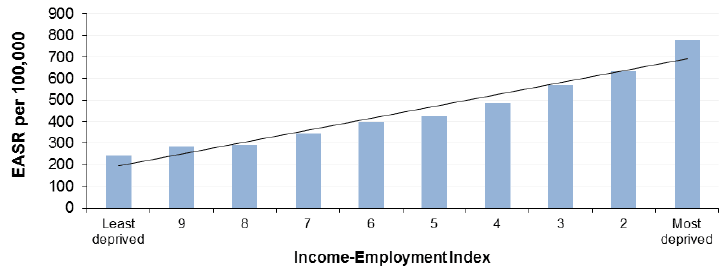
Trends in relative inequalities
Relative inequalities in premature mortality have been stable since 2006 (RII ranging from 1.23 to 1.27).
Over the longer term, relative inequalities increased as the reductions in death rates occurred at a slower rate in the most deprived areas compared to the least deprived areas, in particular between 1997 and 2006.
Between 1997 and 2013, premature mortality rates declined by 37% in the least deprived areas and by 25% in the most deprived areas in Scotland.
In 1997, premature mortality rates were 2.7 times higher in the most deprived areas compared to the least deprived; in 2013, premature mortality rates were 3.2 times higher in the most deprived areas.
Figure 2.2 Relative Index of Inequality (RII): All cause mortality <75y Scotland 1997-2013
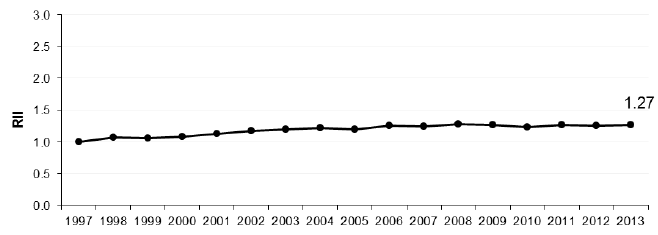
Trends in absolute inequalities
Absolute inequalities in premature mortality have fluctuated but continued an overall downward trend since peaking in 2002.
There have been year-to-year reductions in the absolute gap between the most and least deprived areas since 2007, meaning the gap is now smaller than it was in any other year covered by these figures.
Figure 2.3 Absolute Gap: All cause mortality <75y, Scotland 1997-2013 (European Age-Standardised Rates per 100,000)
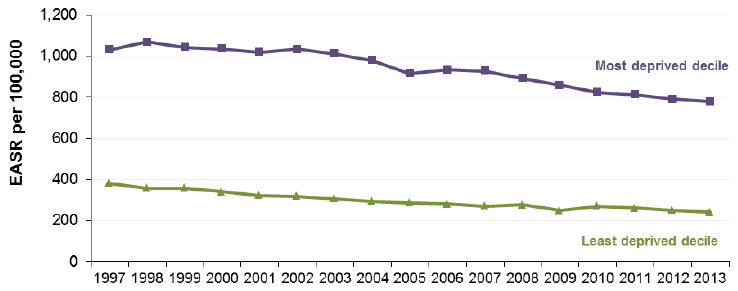
In 2002, the premature mortality rate in the most deprived areas was 1,033.2 per 100,000 and 319.8 per 100,000 in the least deprived areas, a gap of 713.4 per 100,000. By 2013, the gap had reduced to 536.0 per 100,000.
Table 2.1: Trends in premature mortality, 1997-2013
| Year | Number of deaths | Target population size | Rate per 100,000 (EASR) |
|---|---|---|---|
| 1997 | 26,081 | 4,740,269 | 651.9 |
| 1998 | 25,857 | 4,729,975 | 643.3 |
| 1999 | 25,491 | 4,721,298 | 632.5 |
| 2000 | 24,593 | 4,708,667 | 607.3 |
| 2001 | 24,168 | 4,703,661 | 593.1 |
| 2002 | 24,219 | 4,701,958 | 588.9 |
| 2003 | 23,789 | 4,702,431 | 573.4 |
| 2004 | 22,896 | 4,714,233 | 546.2 |
| 2005 | 22,441 | 4,735,320 | 530.3 |
| 2006 | 22,237 | 4,752,425 | 520.4 |
| 2007 | 22,359 | 4,783,452 | 516.8 |
| 2008 | 22,005 | 4,811,453 | 501.3 |
| 2009 | 21,229 | 4,835,007 | 477.0 |
| 2010 | 20,997 | 4,858,058 | 467.4 |
| 2011 | 20,685 | 4,888,316 | 456.1 |
| 2012 | 20,446 | 4,895,114 | 445.3 |
| 2013 | 20,344 | 4,903,074 | 437.5 |
Mental Wellbeing - adults aged 16+
The gap in prevalence of below average wellbeing between those in the most deprived areas and least deprived areas has widened since 2008/2009.
In 2012/2013, adults in the most deprived areas were five times more likely to have below average wellbeing than those in the least deprived areas (26% compared to 6%), indicated by a WEMWBS score of 41 or lower.
This follows a non-significant increase (from 24% to 26%) in the proportion of adults in the most deprived areas with below average mental wellbeing, and a statistically significant decrease (from 8% to 6%) in the proportion of adults in the least deprived areas with below average wellbeing.
Trends in mental wellbeing
The mean score on the Warwick-Edinburgh Mental Wellbeing Scale (WEMWBS) has been fairly static, at 49.8 in 2008/2009 and 49.9 in 2010/2011 and 2012/2013.
'Below average' wellbeing has been defined as WEMWBS scores of at least one standard deviation below the mean, equivalent to scores of 41 or lower in all years. The proportion of adults in Scotland who have a below average WEMWBS score has remained at 15% between 2008/2009 and 2012/2013.
Inequalities in mental wellbeing, 2012/2013
In 2012/2013, 26% of adults in the most deprived areas had below average wellbeing, indicated by a WEMWBS score of 41 or lower. This compared to 6% of adults in the least deprived areas. The pattern of inequalities showed a fairly steady rise in prevalence of below average mental wellbeing with increasing area deprivation, with a slightly sharper increase in the 10% most deprived areas.
Figure 3.1 Proportion of adults (16+) with a below average WEMWBS score by Income-Employment Index, Scotland 2012/2013
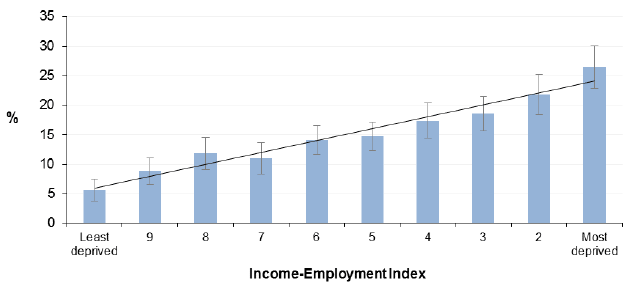
Trends in relative inequalities
The relative index of inequality (RII) in below average wellbeing has increased from 1.18 in 2008/2009 to 1.34 in 2012/2013.
Adults in the most deprived areas are approximately 5 times more likely to have below average wellbeing compared to those in the least deprived areas in 2012/2013. In 2008/2009, adults in the most deprived areas were 3 times more likely to have below average wellbeing.
Figure 3.2 Relative Index of Inequality (RII): Proportions of Adults (16+) with a below average WEMWBS score Scotland, 2008/2009 - 2012/2013
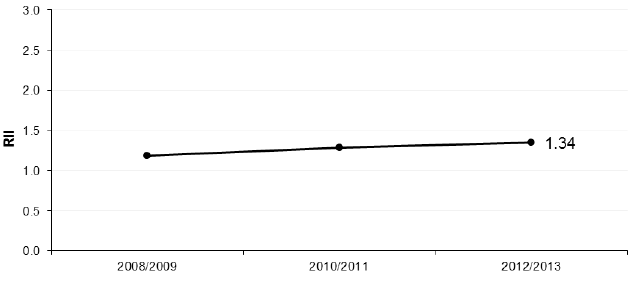
Trends in absolute inequalities
The gap in prevalence of below average wellbeing between those in the most deprived areas and least deprived areas has widened since 2008/2009, following a non-significant increase (from 24% to 26%) in the proportion of adults in the most deprived areas with below average mental wellbeing, and a statistically significant decrease (from 8% to 6%) in the proportion of adults in the least deprived areas with below average wellbeing.
Figure 3.3 Absolute Gap: Proportion of adults (16+) with a below average WEMWBS score Scotland, 2008/2009 - 2012/2013
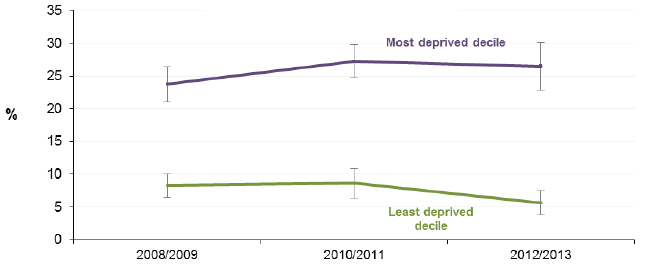
Table 3.1: Trends in mental wellbeing, 2008/2009-2012/2013
| Mean WEMWBS | Below average wellbeing* | |||||
|---|---|---|---|---|---|---|
| Year | Mean WEMWBS score | Lower 95% confidence limit | Upper 95% confidence limit | Proportion of adults with below average wellbeing (%) |
Lower 95% confidence limit (%) | Upper 95% confidence limit (%) |
| 2008/2009 | 49.8 | 49.6 | 50.0 | 14.8 | 14.1 | 15.6 |
| 2010/2011 | 49.9 | 49.7 | 50.1 | 15.0 | 14.2 | 15.8 |
| 2012/2013 | 49.9 | 49.7 | 50.2 | 14.9 | 13.9 | 15.8 |
*indicated by a WEMWBS score of 41 or lower
Contact
Email: Craig Kellock
There is a problem
Thanks for your feedback